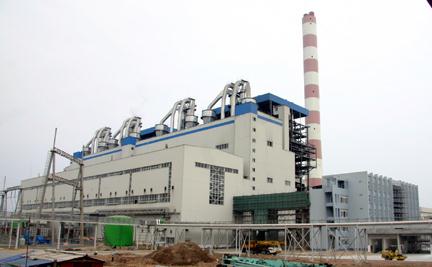|
How Chinese contractors
play tricks in
Chinese contractors have won bids for
construction and installation projects in
In principle, under these contracts, engineering,
procurement and construction (EPC) contractors take full responsibility for
the implementation of these projects. Upon completion and acceptance,
investors then take over the works under the “turn-key” concept.

The Hai Phong 1 thermopower plant.
A Chinese contractor, the Dongfang Electric
Corporation, won the bid for construction and installation of the Hai Phong 1
Thermopower Plant in the northern city of
However, in late 2008 and early 2009, the corporation
continuously lodged complaints to Vietnamese ministries about the
difficulties it was meeting due to exchange rate fluctuations.
With the Chinese yuan appreciating from yuan8.2/US$1 to
yuan6.8/US$1, the contractor claimed it had incurred a loss of $100 million,
asking the Vietnamese investors to accept a higher price for the work. The
contractor stressed that it would have to stop work on the project, as it was
running out of money.
According to Tran Huu
However, negotiations between the Chinese corporation and
Vietnamese sub-contractors were very tough. The Chinese side did not accept
the prices offered by Vietnamese enterprises, saying they were overly high if
compared with its financial capability.
Some Vietnamese sub-contractors tried to accept the low
prices set by the contractor in order to get jobs for their workers. However,
they later had to give up halfway for various reasons. “Some of them gave up
because they could not catch up with the pace, others gave up because the
Chinese partner always delayed payment,”
Modest benefit from Chinese
implemented projects
Public investment projects always hope to help develop
local economies, create GDP and generate jobs. However, analysts argue that
Vietnam can only attain modest benefit from projects implemented by Chinese
contractors because of the low localization ratios, i.e., the degree of
locally made products or services vis-à-vis those that are foreign-supplied.
The Hai Phong 1 and Quang Ninh 1 thermopower projects,
capitalized at over $2 billion, for example, did not create much “leverage”
for the local economy at all. Dr Nguyen Chi Sang, Head of the Mechanical
Engineering Institute, said the localization ratios at the power and cement
projects, where Chinese worked as EPC contractors, were almost zero.
Then there are the two bauxite projects in the Central
Highlands, which have garnered much attention in recent years. The
localization ratio there is about two percent. Yet according to Hatch,
an Australian aluminum company,
Chinese contractors avoid using products and services
from domestic sources. Instead, they bring everything they need from
Dat Viet
|
Thứ Hai, 21 tháng 4, 2014
Đăng ký:
Đăng Nhận xét (Atom)
Không có nhận xét nào:
Đăng nhận xét